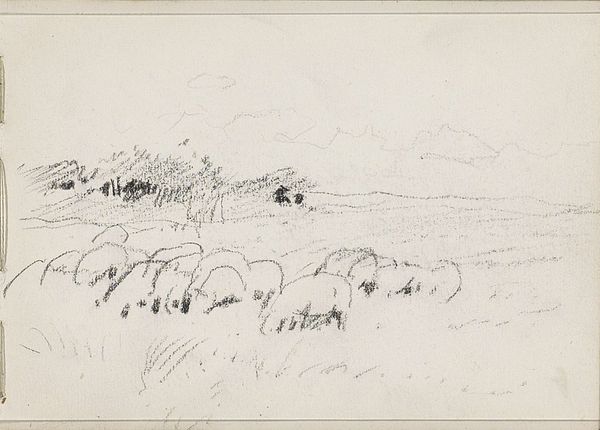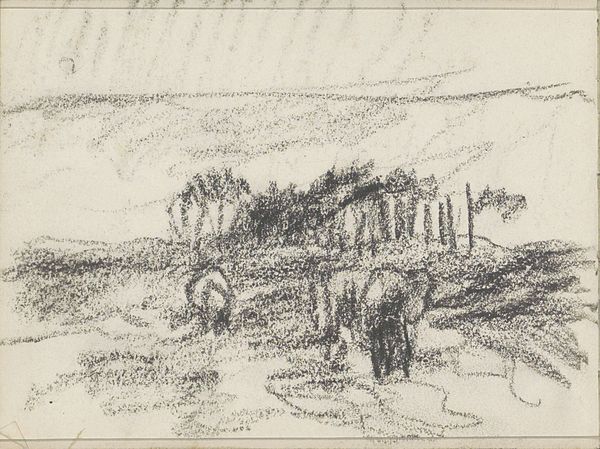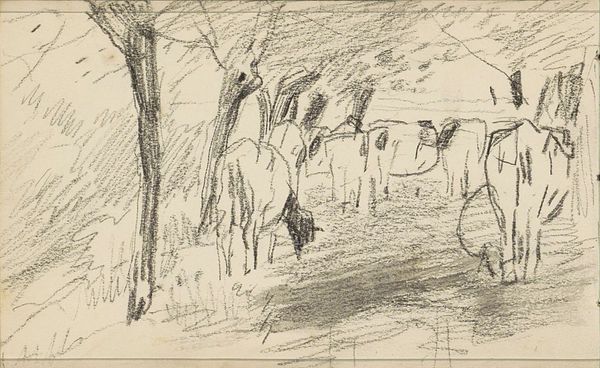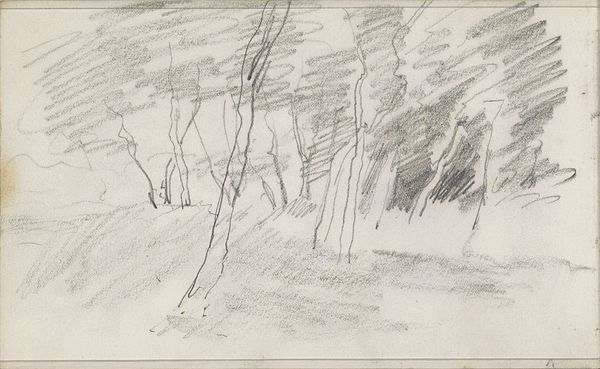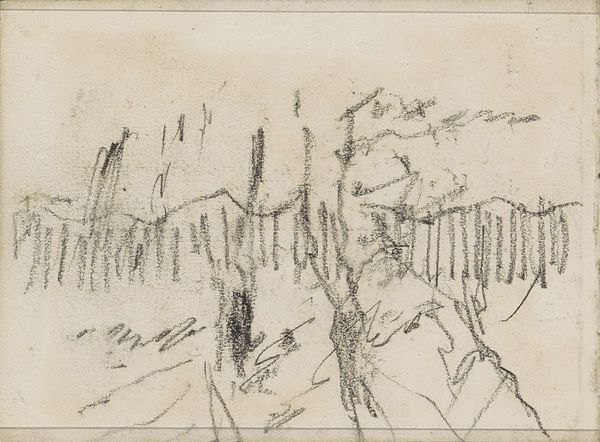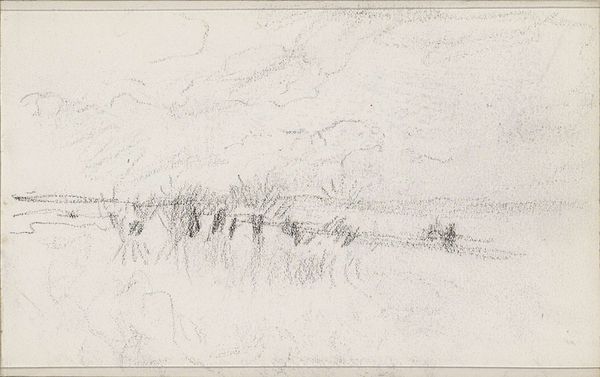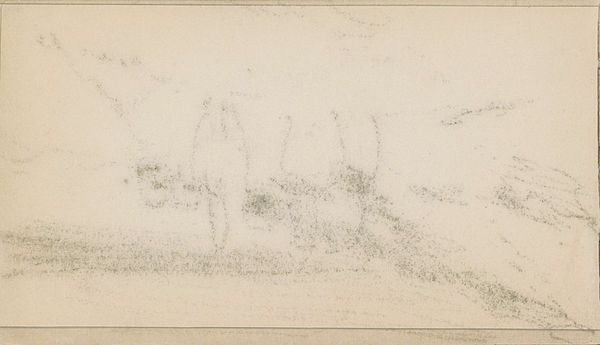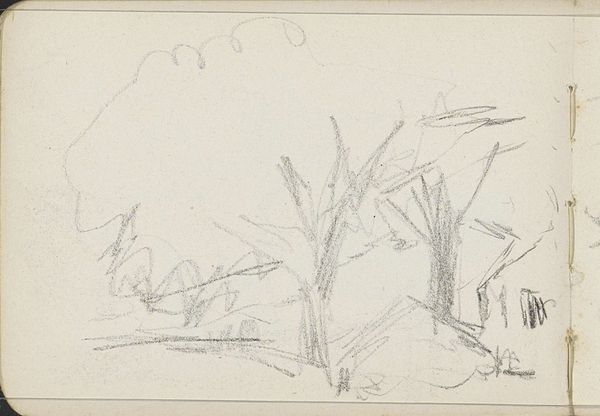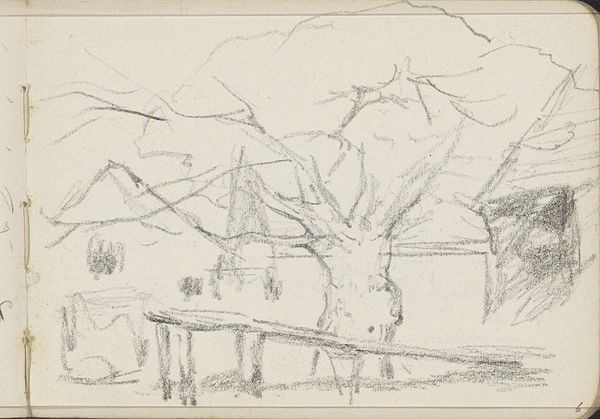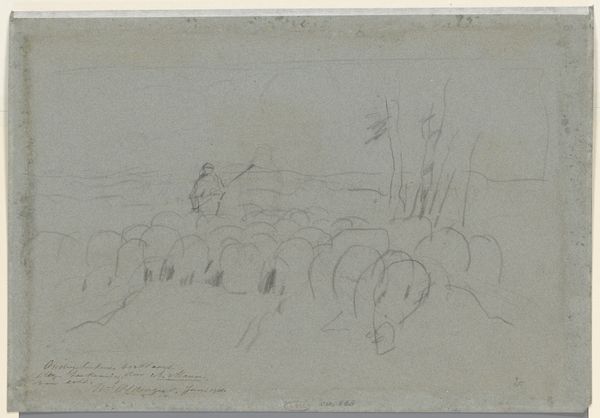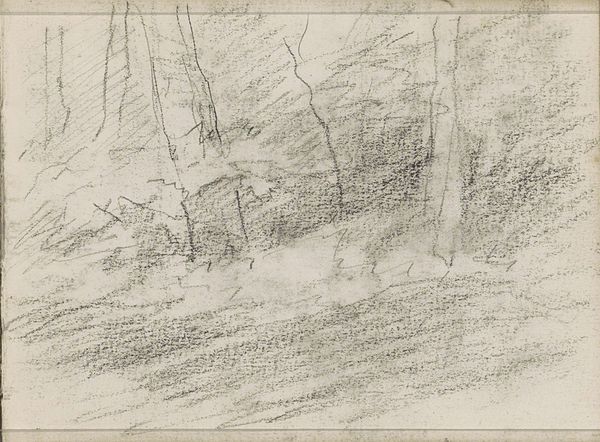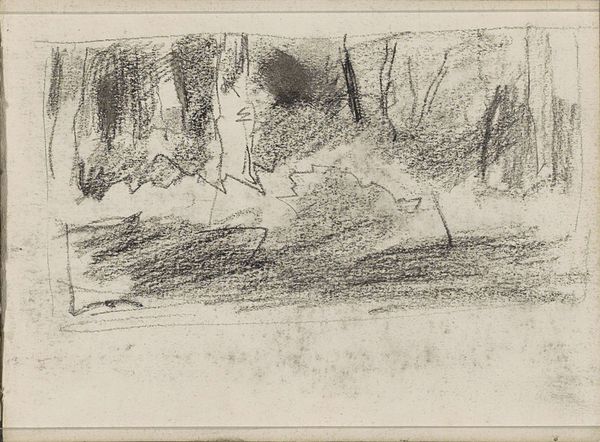
drawing, pencil, graphite, charcoal
#
drawing
#
landscape
#
pencil
#
graphite
#
charcoal
Copyright: Rijks Museum: Open Domain
Curator: We are now looking at Anton Mauve’s "Schaapskudde tussen de bomen", created between 1848 and 1888. This artwork is currently housed here at the Rijksmuseum. Editor: It strikes me as a landscape barely there, almost a ghost of a scene. The marks are incredibly faint, making the overall impression quite subdued and, dare I say, melancholic. Curator: Precisely. Note how Mauve utilized such humble materials—pencil, graphite, and charcoal on paper. This economy forces us to truly observe the nuances of tonal variation achieved through subtle gradations of pressure and density. The essence is distilled. Editor: Right, but let's consider the implications of those materials. This is not some grand oil painting meant for a wealthy patron’s salon. This is a working drawing, likely a study for a larger piece, a record of observed labor and pastoral life. It reflects the day-to-day experiences of rural communities, rendered with accessible, unassuming media. Curator: And the formal aspects amplify this simplicity! The repetition of vertical lines forming the trees provides a structural armature against the amorphous shapes representing the sheep. This juxtaposition creates a rhythmic visual interplay that elevates the mundane to something quietly compelling. Editor: The "quietly compelling" only underscores the realities of shepherding – the constant movement, the closeness to the earth, the sheer ordinariness. Charcoal, easily smudged and transient, mirrors the fleeting nature of the scene itself, capturing a specific moment in time connected to agricultural labor. Curator: I appreciate the point, though I believe the true power lies in its formal ambiguity. Is it complete, or merely a sketch? The very openness invites the viewer to project their own interpretation onto the skeletal composition. Editor: Perhaps. But it's impossible to separate those formal qualities from the social and material conditions of its making. A connection to raw, unprocessed materials that underscores an honest portrayal of agrarian life. Curator: A viewpoint I respect. In either reading, Mauve's subtle command of line and tone provides a lens through which we may better understand, or perhaps more sensitively question, our place in nature. Editor: I concur. Mauve provides not just a visual record, but tangible connection to materials used, creating an intimate and compelling representation of working life within nature.
Comments
No comments
Be the first to comment and join the conversation on the ultimate creative platform.
